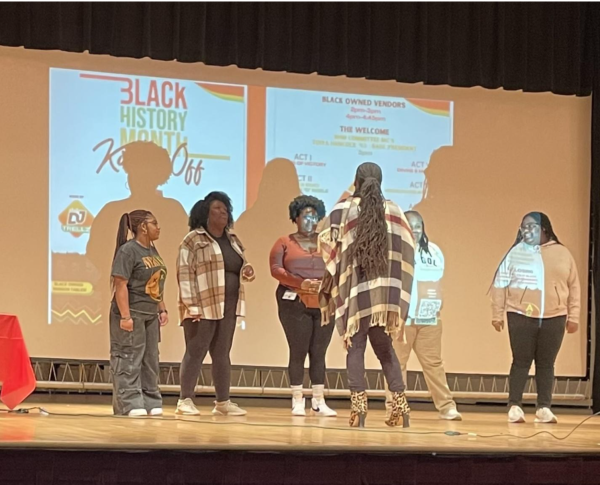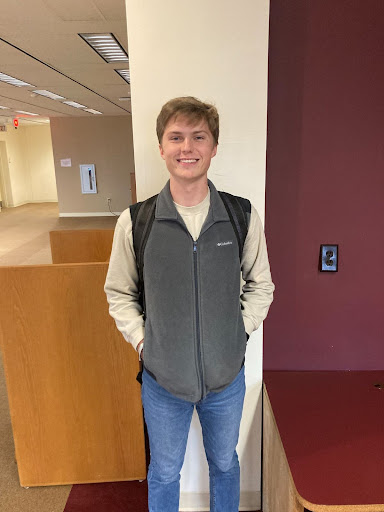Lakey leads workshop on nonviolent protest
On Monday, Mar. 18, activist and sociologist George Lakey led a group of Guilford students, staff and faculty members in a workshop on nonviolent direct action.
The workshop was held in the Gilmer Room of Founders Hall from 2:30 p.m. to 5:00 p.m. and was sponsored by Justice and Policy Studies, the Center for Principled Problem Solving, Friends Center, Intercultural Engagement Center and Peace and Conflict Studies department.
Author of “Viking Economics: How the Scandinavians Got It Right-and How We Can, Too” and “How We Win: A Guide to Nonviolent Direct Action Campaigning,” Lakey is a Quaker who has worked with Bayard Rustin, Cesar Chavez, environmentalists and labor groups, among many others. Lakey began his work as a trainer in the civil rights movement in the 1960s and recently retired from Swarthmore College, where he was a Eugene M. Lang Visiting Professor for Issues of Social Change.
Lakey led a discussion about “How We Win: A Guide to Nonviolent Direct Action Campaigning” at Scuppernong Books the day before the workshop on Sunday, March 17. The talk was held at 3:00 p.m.
Professor of Justice and Policy Studies Sherry Giles introduced Lakey and touched on the impact and significance of his work.
“Thank you for writing this book on nonviolent direct protest and spending vast, amazing amounts of time and energy travelling around the country to share your knowledge and stories on direct action in workshops and book talks,” Giles said. “Just in the past three days, I’m aware of a workshop you did in Durham, three workshops in Greensboro and a book talk at Scuppernong.”
Giles continued, detailing the work Lakey has done with nonviolent direct action.
“George has led over 1500 social change workshops on five continents and led projects on local, national and international levels,” Giles said. “His first time arrested was in 1963 during Civil Rights Movement. His most recent arrest was March 29, 2018 as a participant in the Power Local Green Jobs Campaign. When he’s not protesting and doing workshops and book tours, George lives in Philadelphia.”
The workshop included small group discussions that were later facilitated and brought together into focused ideas by Lakey.
Lakey touched on the importance of using personal strengths that have individuals utilize in overcoming hardship and how such strengths can be applied in approaching and going about nonviolent direct action.
“I’m just struck by (how) each of these qualities mentioned so far, each of these strengths that have been so far mentioned, show up in social action,” Lakey said. “Even though they’re deeply personal on the one hand, they do show up in social action, even in nonviolent direct action campaigns.
Lakey alked about the “Global Nonviolent Action Database,” a project he built with a group of students at Swarthmore.
“(We built) a database of social action campaigns of nonviolent direct action, using that as a tool or a set of tools in order to make some kind of change or in some cases, to defend against something that was coming in and imposing itself on people,” Lakey said. “So far, we’ve gotten the database to the point where there are 1100 cases of nonviolent struggle around the world in almost 200 countries and going back as far as 10th century B.C,” Lakey said.
Touching on the process of creating the database, Lakey emphasized the significance of having all of this information in one easily accessible place online.
“Each student was responsible, not only for researching this campaign, but judging it on a scale from zero to 10 on the degree of success in terms of the campaign’s stated goals,” Lakey said. “So you might be interested in, ‘well I want to learn from the campaigns that won,’ or you might say, ‘I want to learn from the campaigns that lost. What did they do wrong,’ and you’ll find out what not to do. This becomes very, very useful in that way.”
The database includes and lists the different methods of nonviolent protest and persuasion that have been used and documented. These methods include mock funerals, social boycott, silence and the blocking of lines of command and information. Lakey emphasized the advantages of getting creative with the method that is used in nonviolent action.
“There are, believe it or not, 199 methods,” Lakey said. “ … Next time somebody comes to you and says, ‘let’s do a march or a rally,’ and you know how boring marches and rallies can be, you can say, ‘well, let’s come to the database and find out about the other 197 methods and add a little spice to our life and choose something different.’”
Lakey continued to share personal stories of his experience in working as a trainer and closed the workshop with an opportunity for attendees to design a new campaign as an exercise and in application of all that was discussed.
First-year Anna Kohl shared her reasons for attending and found the workshop to be informational and rather engaging.
“My friend went to his talk last night and said it was super amazing,” Kohl said. “I think that it’s a really interesting topic in terms of religion and activism.”








